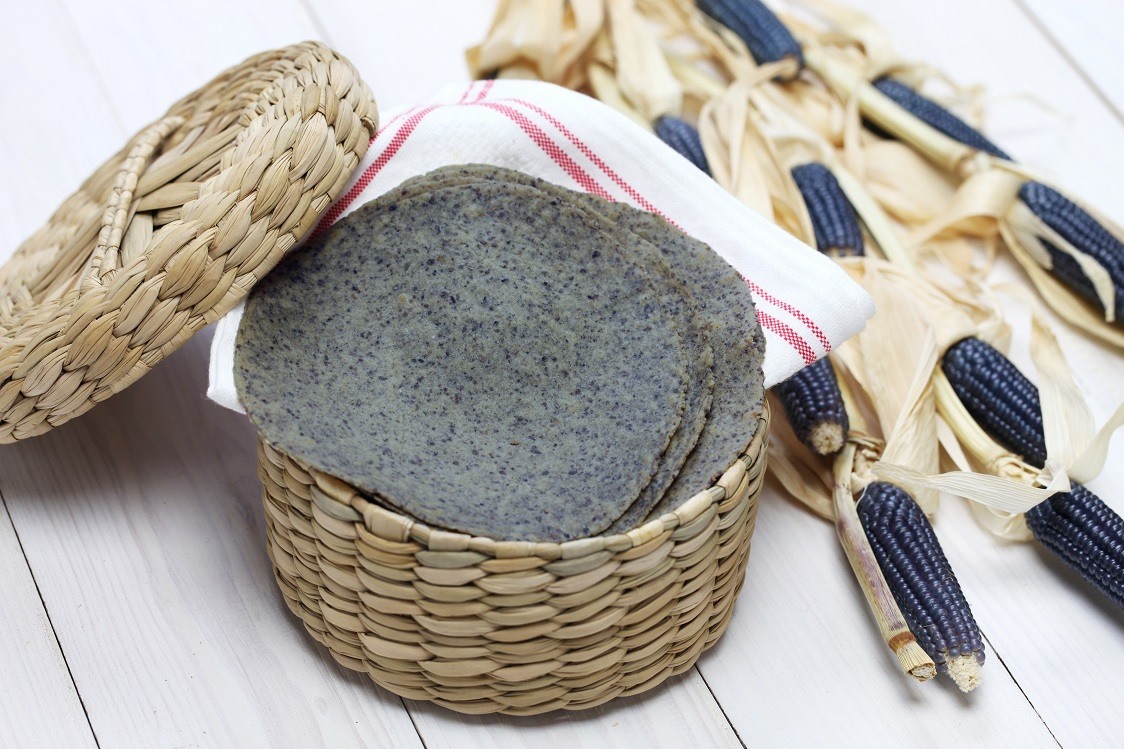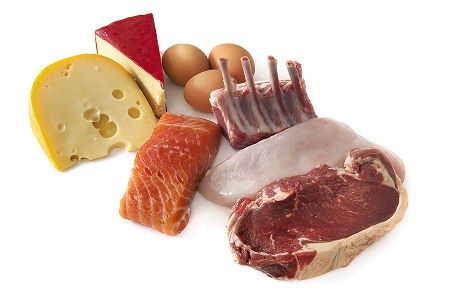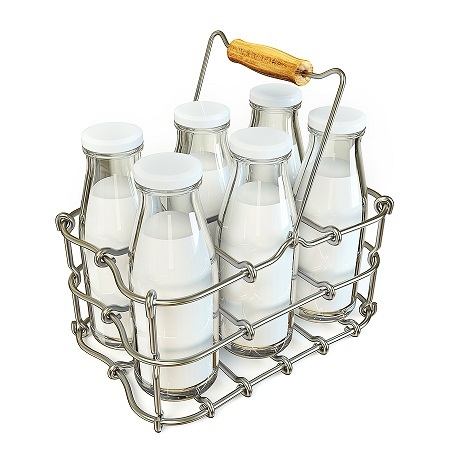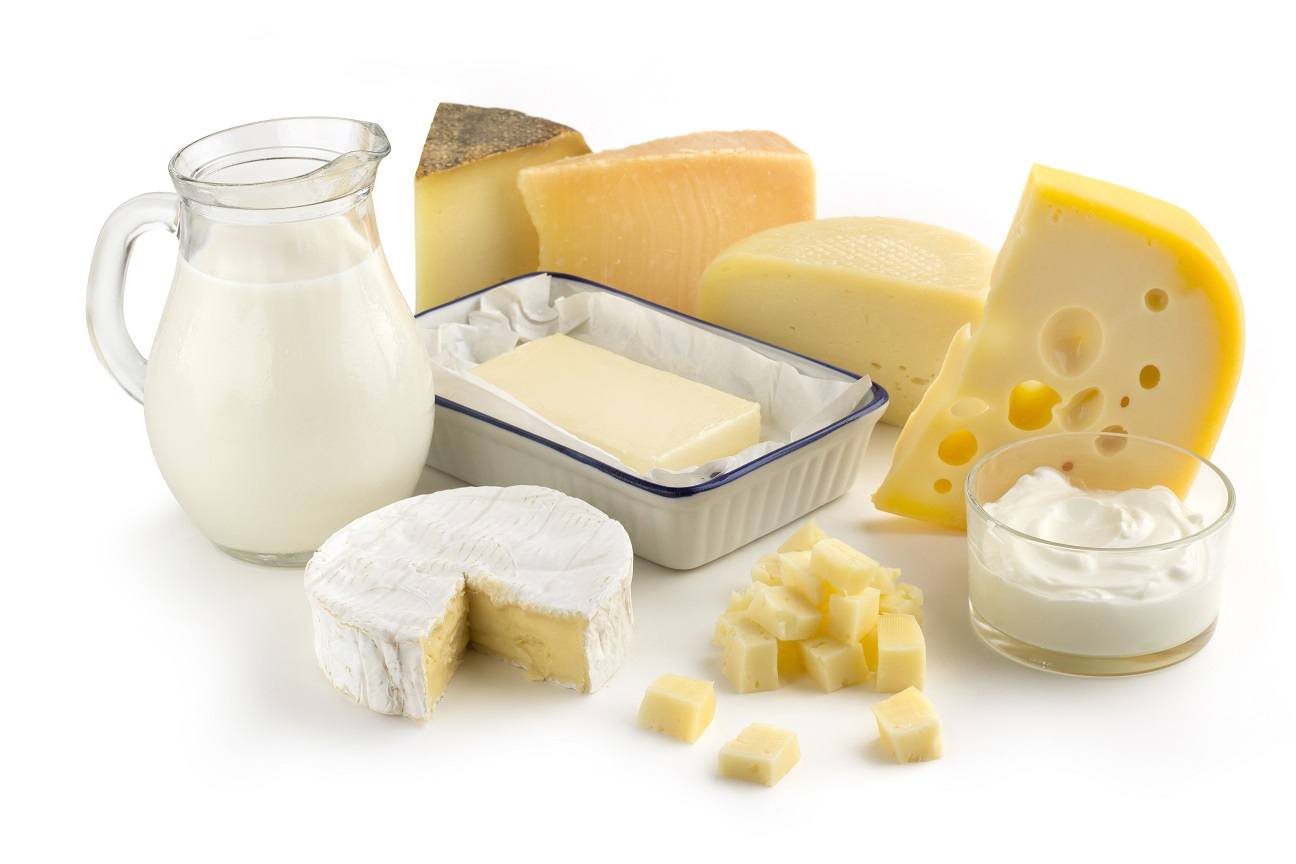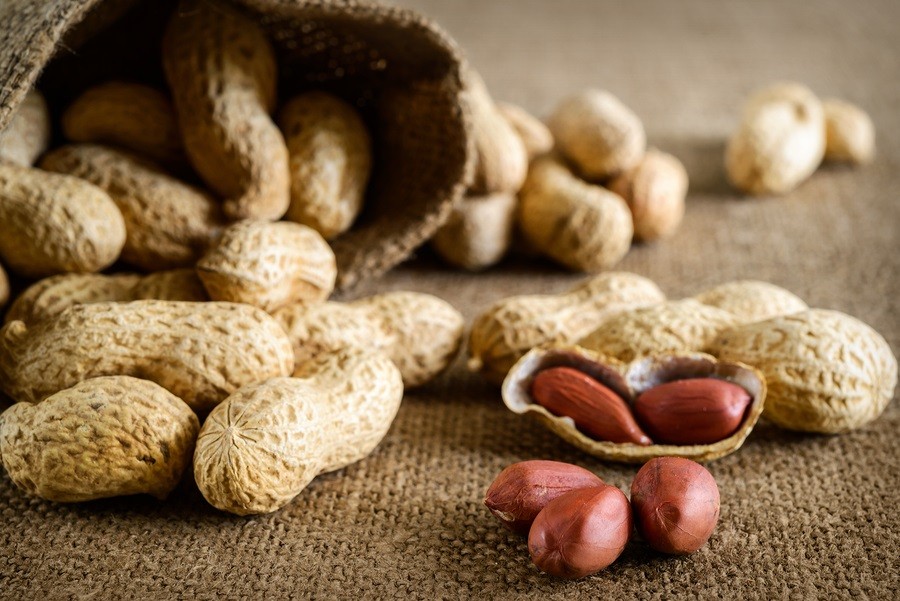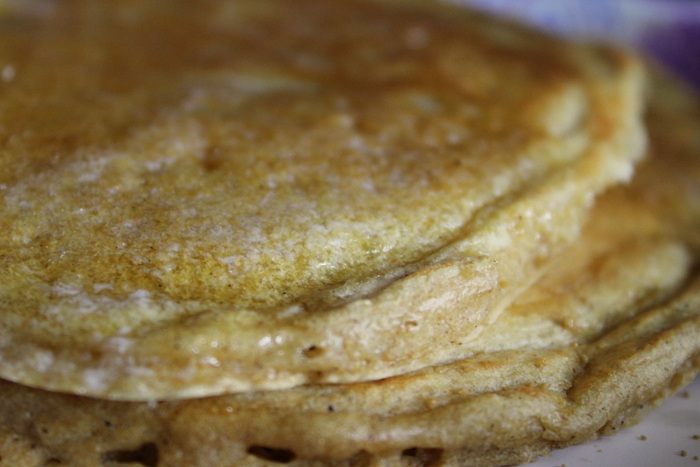News regarding traditional wisdom and native diets regarding nutrition.
Federal Government to Monitor Weight and Collect Data on Children in Daycare
The Washington Free Beacon is reporting that bureaucrats from the U.S. Department of Agriculture (USDA) will weigh and measure children in daycare as part of a study mandated by First Lady Michelle Obama’s Healthy Hunger-Free Kids Act. Will this data be used by medical professionals as another way to medically kidnap children if they do not measure up to government standards for growth and weight, or are not eating government-approved foods?
Lacto-Fermented Vegetables for Spring: Asparagus and Radish
In the fall we preserve cabbage by making sauerkraut. Salsa and berries are preserved and made better by fermenting them at the height of summer. Spring, with its abundance of colorful, crisp vegetables, spring holds a veritable buffet of vegetables waiting to be fermented into probiotic treats. Asparagus comes up early as a perennial vegetable. A member of the lily family, its shoot is cut and brought to the table crisp and green. Radishes are one of the quickest spring vegetables to grow – some take only 30 days to fully mature. Both are wonderful candidates for a probiotic and enzyme-rich spring fermented vegetable.
Golden Milk Recipe with Turmeric and Virgin Coconut Oil
Golden Milk is an ancient Ayurvedic drink made using turmeric and milk – and it’s one of the best ways I know to incorporate turmeric into one’s daily diet. Turmeric is known to have so many health benefits due to curcumin, a powerful polyphenol antioxidant that also gives turmeric its beautiful golden color. Making Golden Milk is so easy, and by making a Golden Paste ahead of time, you can enjoy a nice hot cup of Golden Milk in minutes! Because turmeric is fat-soluble, using virgin coconut oil not only increases turmeric’s health benefits, but it adds one more way to use this healthy fat every day!
Long-Term Care of a Sourdough Starter and When to Use It in a Recipe
A sourdough starter is quite similar to other cultures such as yogurt and kefir. It needs regular feedings to stay healthy. It can be adversely affected by changes in food, climate, and care. Take heart, though, in knowing that a healthy, vigorous starter can be kept without having to feed it every single day. On the contrary, your starter can be kept in a refrigerator for short-term storage. If you’d like to take a longer break from sourdough baking – for months, even – there are options for this as well.
Making Corn Tortillas and Coconut Oil-Fried Chips
Corn chips are simply tortillas fried in fat and salted. Commercial corn chips are most commonly fried in rancid vegetable fats such as soy, cotton, or corn and are made with genetically modified corn. For the most fresh, delicious, and healthy corn chips, try homemade masa pressed into tortillas and fried in pure coconut oil.
How Diet can Help Heal Vaccine Damage
This is the third article in a series about treating vaccine related damage. It will focus on reversing vaccine damage by making changes in what we put in our mouths. The two previous articles discussed how homeopathy can treat and restore health to people who have been damaged by vaccines. This article, and the one that will follow it, will focus on the important role that diet has in treating the physical, emotional, cognitive, and behavioral consequences that result from using vaccines and eating food containing the toxic pesticide called glyphosate. As we will see in this article, it is not just the harm from vaccines that needs to be healed, but it is also the harm that results from the modern food supply.
Kraft Buys American Dietitians Approval for Processed Cheese
The Academy of Nutrition and Dietetics (AND) is the gift that keeps on giving. To me, they provide me with many blog posts and newsletter articles. I am not only one receiving gifts from the AND. Kraft Foods just received the first endorsement of a food product from the AND: Processed Cheese.
Creating an Active Sourdough Starter From Two Simple Ingredients
Creating and keeping a sourdough starter can seem like an intimidating task to the uninitiated. It is quite amazing how this slurry of flour and water leavens and ferments bread. Despite its mysterious abilities, this age-old souring and leavening agent is surprisingly simple to make. There are many ways to create a sourdough starter. Indeed, you can find starter recipes that include fruit juice, potatoes and their cooking water, and commercial yeast online. All of these are viable options for leavening your bread with a homemade sourdough starter. For simplicity’s sake, however, this article will focus on a sourdough starter created simply with flour and water.
How to Make Corn Tortillas: Nixtamalizing and Grinding Dried Corn
The process of nixtamalization is a simple one, one that has been practiced for generations by those whose mainstay is the corn grain. Corn masa, the dough that makes tortillas and chips and tamales, cannot be made without this process. But it wasn't done for frivolous reasons or for aesthetic purposes. Instead, those who subsisted off of corn and other local foods found it imperative to their health. Pellagra is a disease often acquired by cultures who began to utilize corn in large amounts in their diet. When corn was introduced to a new culture through travel or trade, and the historic practice of nixtamalizing the corn was ignored, people often fell ill with skin, digestive, and mental disorders. This was later diagnosed as pellagra. Those who had been subsisting on corn for generations and who were taught to soak their corn in lime, however, consumed corn as the backbone of their diet without such symptoms. Their was wisdom in the preparation. This process of soaking and cooking the corn in an alkaline solution - nixtamalization - is now known to release a B vitamin called niacin. Pellagra - and the vitamin and amino acid deficiencies related to it - can be prevented when the diet contains enough niacin. Nixtamalization, therefore, is a simple practice that transforms corn into a nourishing everyday food by releasing the niacin and making the grain more digestible.
Sifting Whole Wheat Flour and Other Tips for Making Better Whole Grain Breads
Baking bread is one of the most basic of tasks and yet, in this current day-and-age, it has been complicated by dozens of factors. To trudge through the confusion, like so many other topics, we need to get back to the basics. That starts with good quality grain and the ability to use it to create good bread. There are as many ways to make good bread as there are cultures around the world that rely on it for their daily sustenance. What follows is a simple list of tips and tricks for the home baker looking to create better loaves using wholesome ingredients. For those who like to stick with 100% whole grain breads, there are three techniques that can be used to work with the fiber and heartiness of whole grains, rather than against them.
New Dietary Guidelines Reverse Flawed Recommendations on Cholesterol
Limitations for cholesterol will likely be removed from the 2015 edition of Dietary Guidelines for Americans; over consumption of dietary cholesterol is now cited as being of no concern. A recent review of studies investigating the link between dietary fat and causes of death concluded that recommendations to reduce the amount of fat we eat every day should never have been made. When fat was removed from processed foods, sugar was added in. This has led to a massive increase in obesity, diabetes, and non-alcoholic fatty liver disease, even among children
What’s Behind the Government’s Hatred of Raw Milk?
Government bans on the sale and distribution of raw milk and raw milk products are enforced in the name of public safety. But many people enjoy the health benefits of milk that has not been pasteurized, and some farms want sell it. Are the health threats from raw milk significant enough to warrant a ban on its sale? Government data and the lack of regulation of other raw foods suggest that they are not.
Dr. Brownstein: National Panel Reverses Idiotic Cholesterol Guidelines
As reported in the New York Times (2.20.15), a nutrition advisory panel that shapes U.S dietary advice eased some of the previous restrictions on fat and cholesterol, while at the same time recommending Americans lower their consumption of sugar. For many years, I have been writing and lecturing about the idiotic cholesterol and fat guidelines that the Powers-That-Be have been espousing. Over 30 years ago, we were told to eat less fat and cholesterol in order to lower our risk from dying from cardiovascular disease. During that same time we were encouraged to increase our consumption of carbohydrates in the form of grains and bakery products. We followed the Powers-That-Be’s advice and guess what? Our health has worsened. During the time we lowered our fat and cholesterol intake, we suffered with more obesity, diabetes, and heart disease.
Benefits of Long Sourdough Fermentation
In recent years we have seen a resurgence of interest in breads given a longer fermentation time via sourdough leavening. While these may seem like a lot of work due to the delay between mixing and baking the dough, they can actually be prepared quite simply with no more hands-on time than your usual loaf of bread. A little timing and planning are all that are required. The reasons for the longer fermentation are many. With digestive problems on the rise, those with compromised guts are finding breads made with a longer fermentation (rise) period to be more easily digested.
Study: Government Guidelines on Low-fat Diet Were Not Supported by Science
In 2015, the British Medical Journal published a meta-analysis looking at randomised controlled trials (RCTs) that were available to US and UK regulatory committees that adopted low-fat dietary guidelines in the 1970s and 1980s to supposedly reduce coronary heart disease (CHD). The authors of the study state that to date, no analysis of the evidence base for recommending a low-fat diet to reduce heart disease has ever been studied. So the authors conducted a systematic review and meta-analysis of the RCTs that were published prior to 1983, which examined the relationship between dietary fat, serum cholesterol and the development of coronary heart disease. After analyzing multiple studies that included 2467 males, the authors found "no differences in all-cause mortality and non-significant differences in CHD mortality, resulting from the dietary interventions." They therefore concluded that: "Dietary recommendations were introduced for 220 million US and 56 million UK citizens by 1983, in the absence of supporting evidence from RCTs." How many lives have been ruined by the low-fat theory of heart disease?
Study: Probiotics Can Cure Peanut Allergy
Australian researchers have found a possible key to a cure for people with potentially fatal peanut allergies. A Melbourne-based study has already transformed the lives of many of the children who took part in the clinical trial. Researchers from the Murdoch Childrens Research Institute gave about 30 allergic children a daily dose of peanut protein together with a probiotic in an increasing amount over an 18-month period. The probiotic used in the study was Lactobacillus rhamnosus and the dose was equivalent to eating about 20kg of yoghurt each day. At the end of the trial 80% of the children could eat peanuts without any reaction.
Make your own Lacto-Fermented Ketchup
Beloved by many for its tangy, sweet, and lightly spiced flavor; tomato ketchup is possibly America’s favorite condiment. Many have turned away from the thick tomato preserve due to concerns over ingredients found in commercial ketchup. It is possible, however, to make a homemade version that is not only a healthful alternative to commercial brands, but which also has the added benefits of fermentation. And it's as simple as whisking together a few common ingredients.
Glyphosate Found in Feeding Tube Liquid Given to Sick Children in Hospitals
In the first ever testing of glyphosate herbicides in feeding tube liquid which is given to babies and children with cancer in hospitals, Moms Across America has detected high levels in 30% of Pediasure Enteral Nutritional Drink samples tested. The shocking results included samples from the same batch which tested positive at levels above 75 ppb, which is 800 to 1110 times higher than has been shown to destroy gut bacteria in chickens. An amount of only 50 ppt was shown to cause kidney, liver, and sex hormone changes in rats. Moms Across America finds it appalling that our health care providers have been led to believe this feeding tube liquid is safe. Our children and loved ones who are depending on our health institutions to support their immune system and recovery. Instead they are being fed a liquid which scientists and knowledgeable care givers now believe is doing the exact opposite.
The Benefits of Fermentation: Whole Grain Sourdough Pancakes
Light but substantial, fluffy and tangy; sourdough works wonders on pancakes. Not only do sourdough pancakes have a flavor and texture that cannot be beat, they also won’t leave you feeling bogged down after breakfast. Sourdough starter can be used not only for those fabulous loaves of tangy artisan bread, but for any baked good or grain-based treat. Muffins, quick breads, bagels, yeasted loaves, and even pancakes can all be made better through the fermentation of sourdough. Furthermore, using sourdough with freshly ground whole grains is a wonderful means of creating nourishing versions of your family’s favorite foods by improving both the healthfulness and the flavor of pancakes.
How to Eat a Coconut-Rich Breakfast
The energy and nourishment needed for a productive day starts at the breakfast table; so why not start the day off right with the many benefits of coconut? Coconut can be eaten in both sweet and savory dishes, taking the place of many of the foods you may already be eating to break the fast. The forms of coconut are many. Using them individually or in combination with one another can produce health-giving, allergen-friendly versions of some of our favorite breakfast foods.












